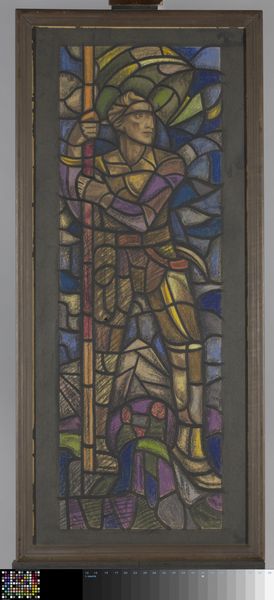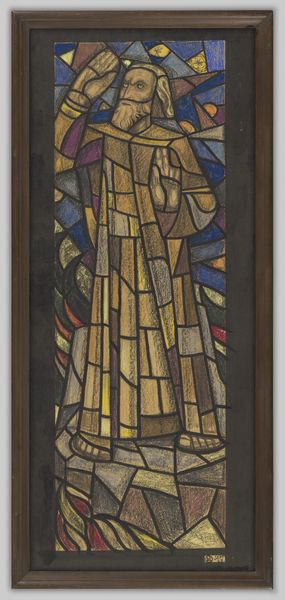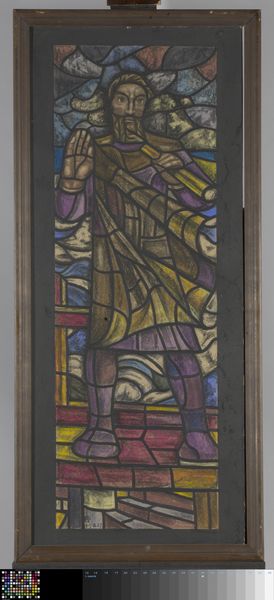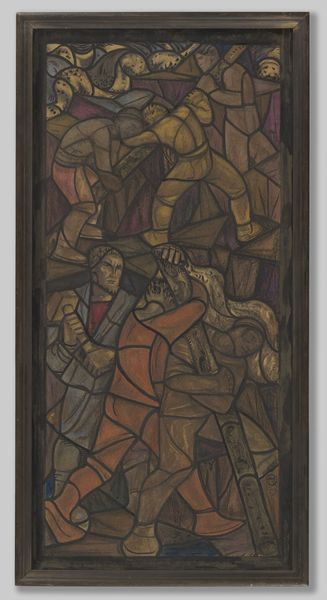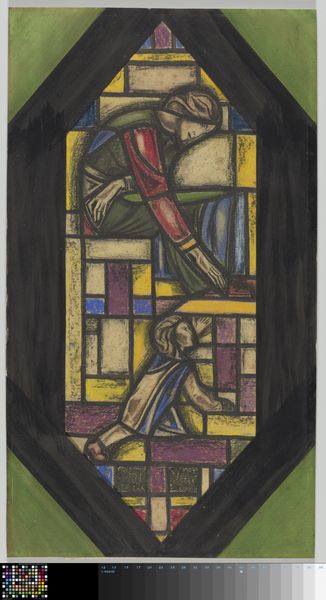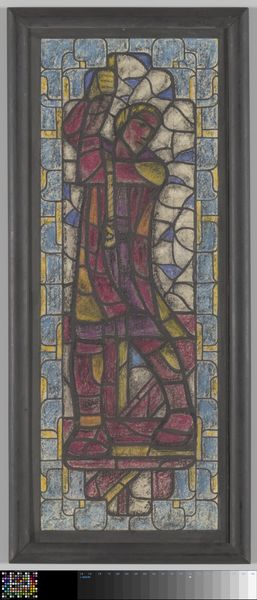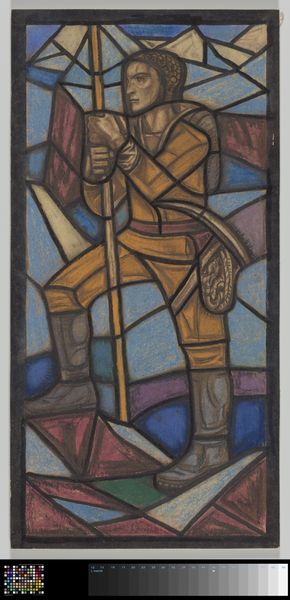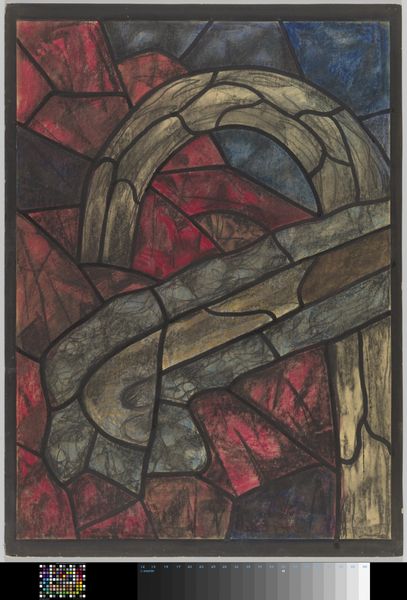
Ontwerp voor raam in het Stadhuis in Amsterdam c. 1868 - 1938
0:00
0:00
drawing, coloured-pencil, glass, pencil
#
drawing
#
coloured-pencil
#
medieval
#
narrative-art
#
figuration
#
glass
#
pencil
#
history-painting
Dimensions: height 1615 mm, width 795 mm
Copyright: Rijks Museum: Open Domain
Editor: Here we have Richard Nicolaüs Roland Holst's "Design for a Window in the Amsterdam Town Hall," dating roughly between 1868 and 1938. It’s a drawing using pencil and colored pencil. Seeing a drawing for a stained glass design is really intriguing! There's this solemn medieval vibe, and I’m drawn to the imposing figure of the knight. What jumps out at you when you look at this? Curator: What an excellent question! Well, the initial jolt, of course, is that it’s not the thing itself, is it? It's the anticipation of light made solid, isn't it? All that future glory, distilled. For me, it evokes the Dutch historical consciousness, a yearning for a mythic past infused into the very architecture of governance. Notice how the artist uses colored pencils to simulate the vibrancy of stained glass. Editor: Absolutely, it's like holding a future monument in your hand! It does give that hopeful impression. The medieval knight is quite striking; does he represent something specific to you? Curator: Ah, symbolism! He’s a guardian figure. Strength tempered by civic duty. The drawing isn’t just an aesthetic exercise; it’s a potent piece of civic dreaming. Roland Holst is visualizing not just what will be, but what *should* be, through art. But tell me, what does the technique suggest to you? All the hard lines? Editor: The angular lines almost give a fractured effect. It feels rigid and precise. It seems symbolic that these stories that compose society can also be fragile. Curator: A bit broken, yes, which mirrors our own imperfect understanding of history. The sharp angles and controlled strokes give it an almost defiant stance, refusing sentimentality and embracing stark, linear beauty. It’s thought-provoking to ponder, don’t you think, that dreams for a society are held in delicate art? Editor: Definitely gives me a lot to consider. I initially only considered the aesthetic, but I see that it is equally significant that art can also represent ideas about how one understands the society. Thanks for sharing!
Comments
No comments
Be the first to comment and join the conversation on the ultimate creative platform.
